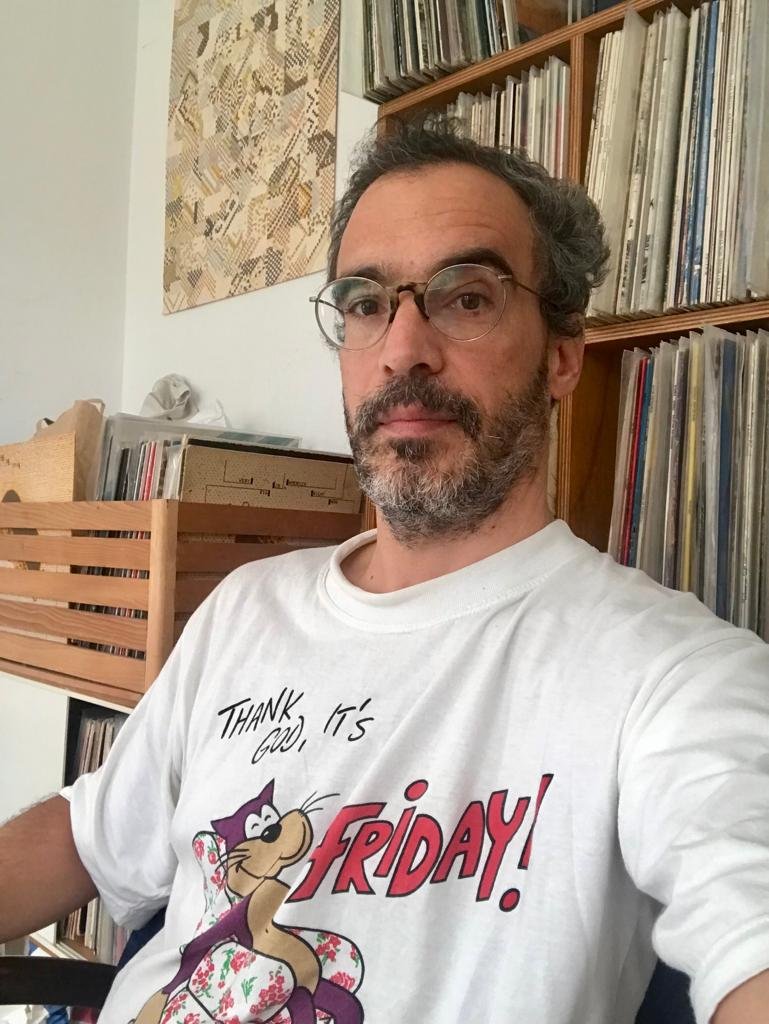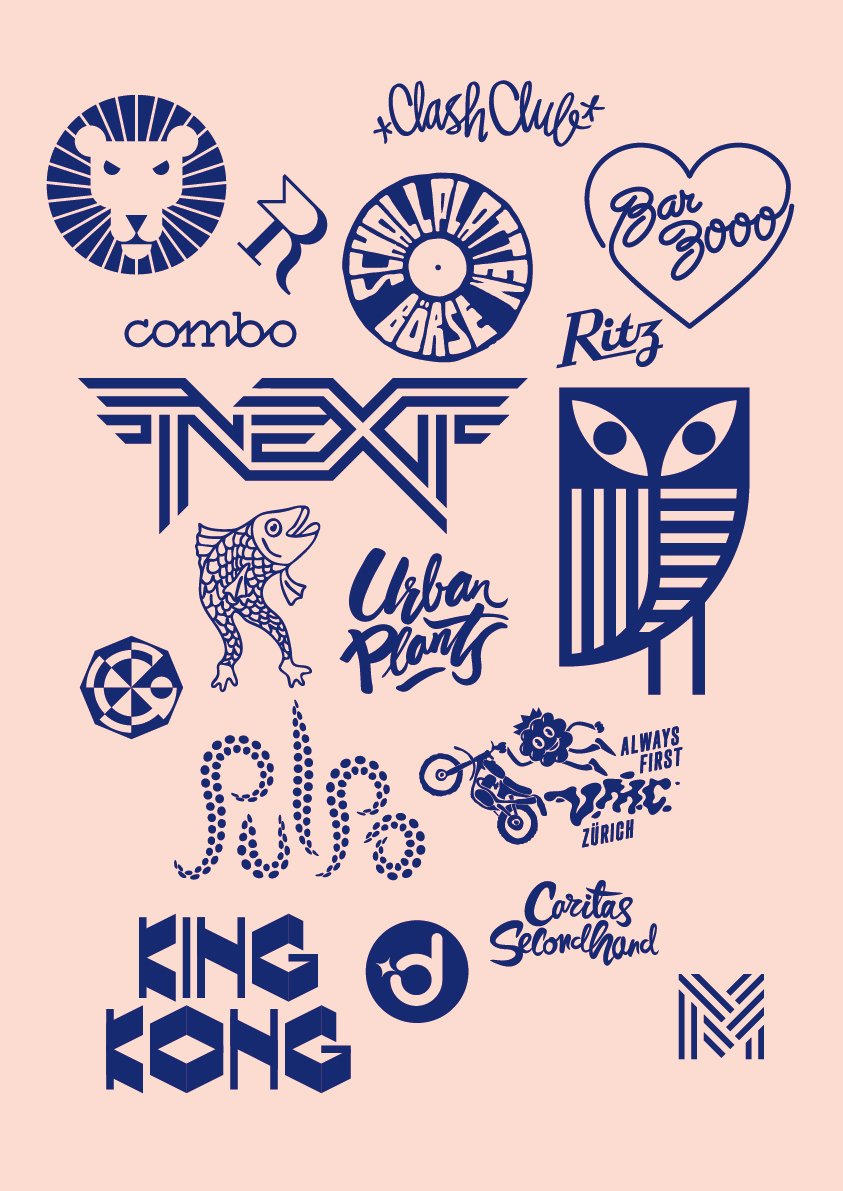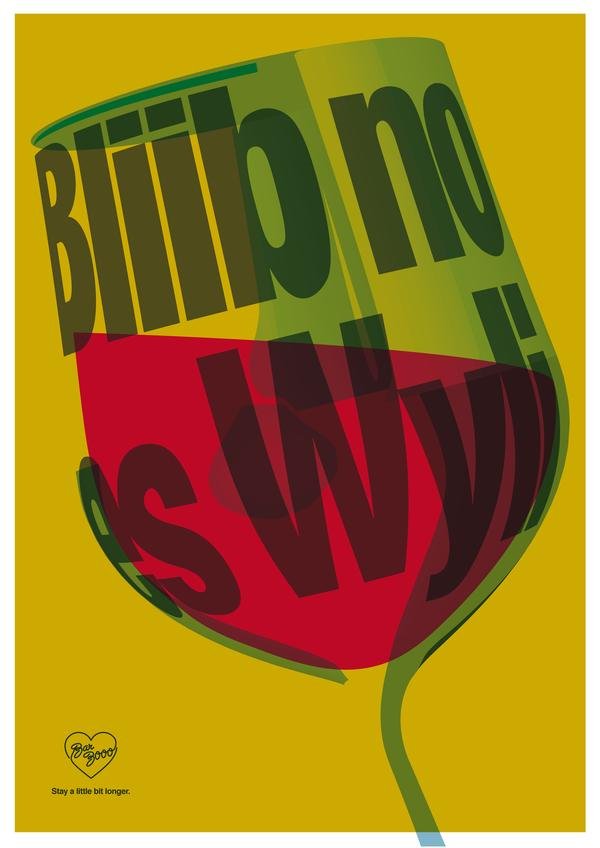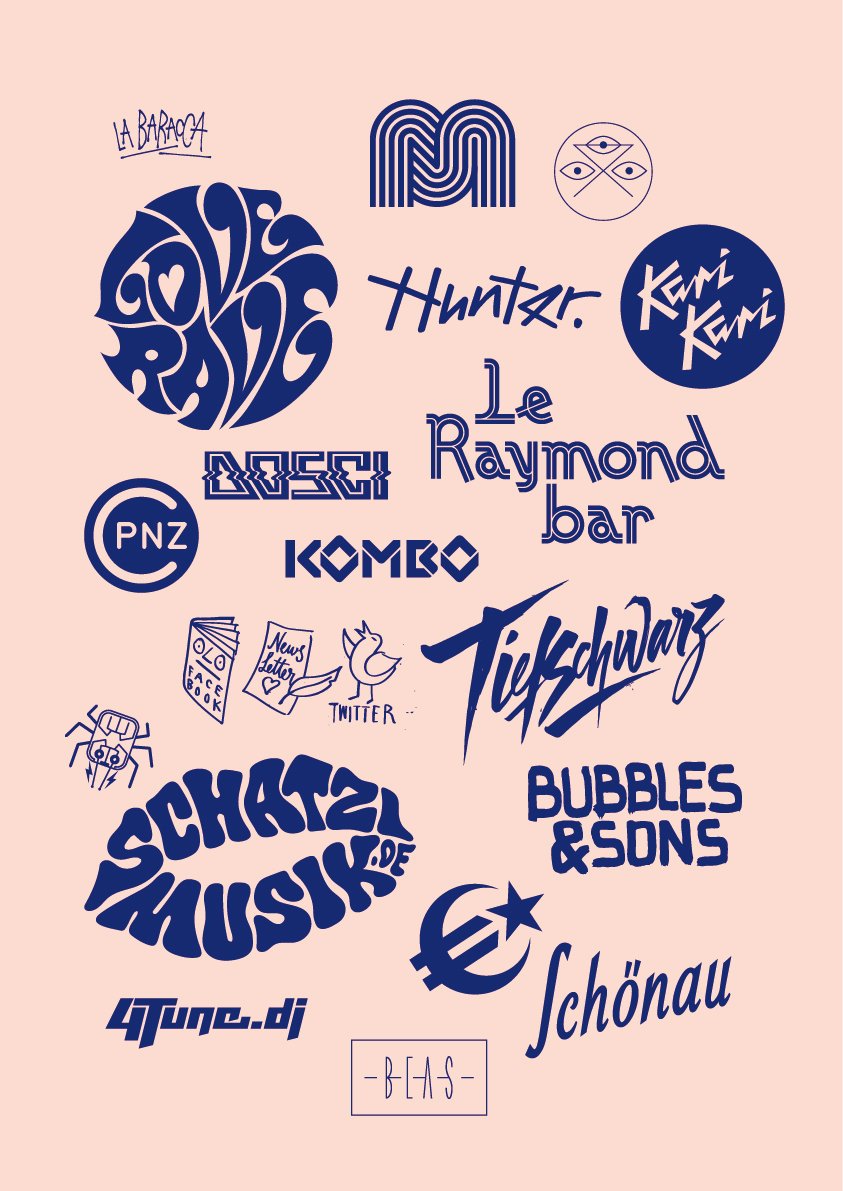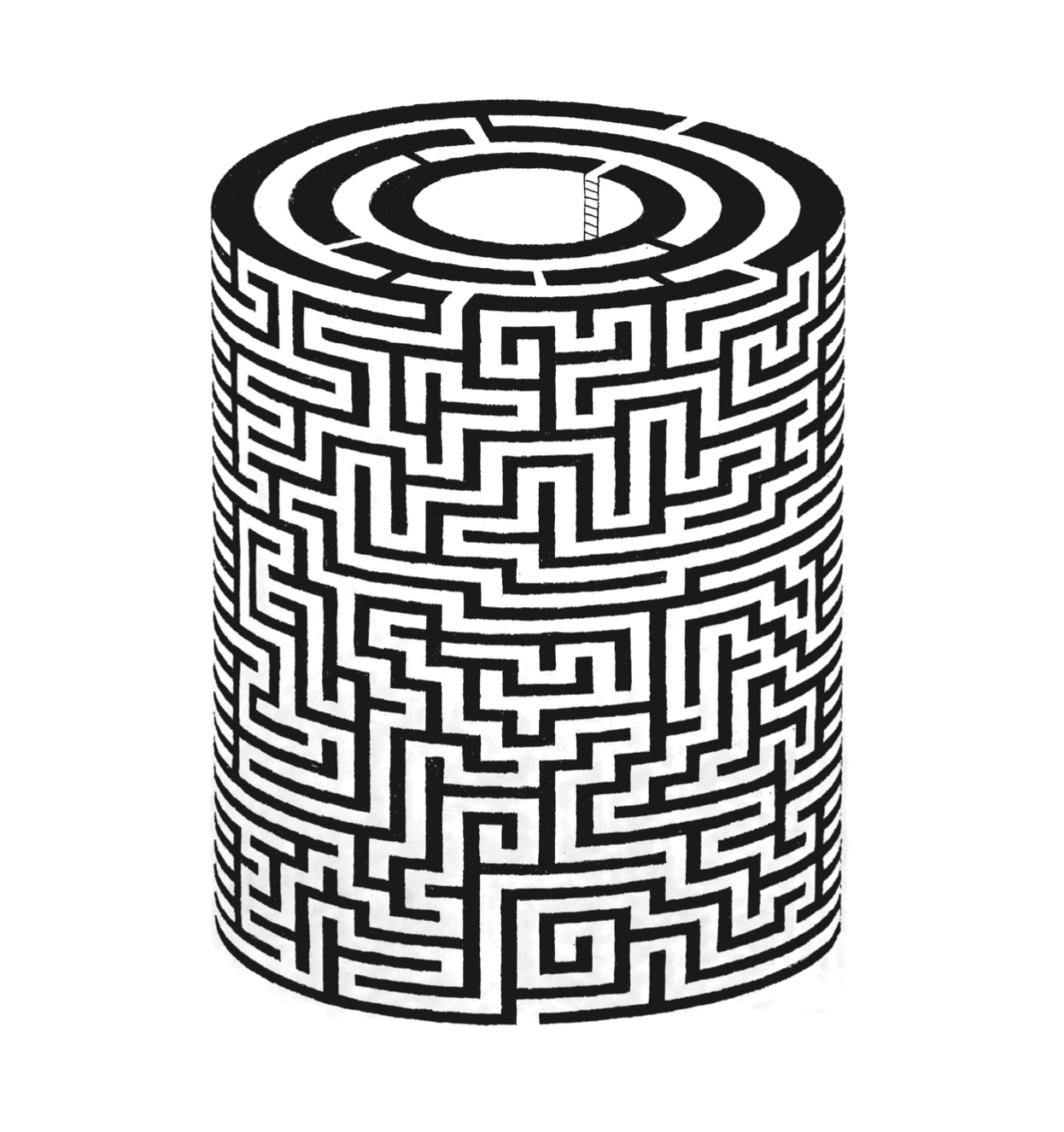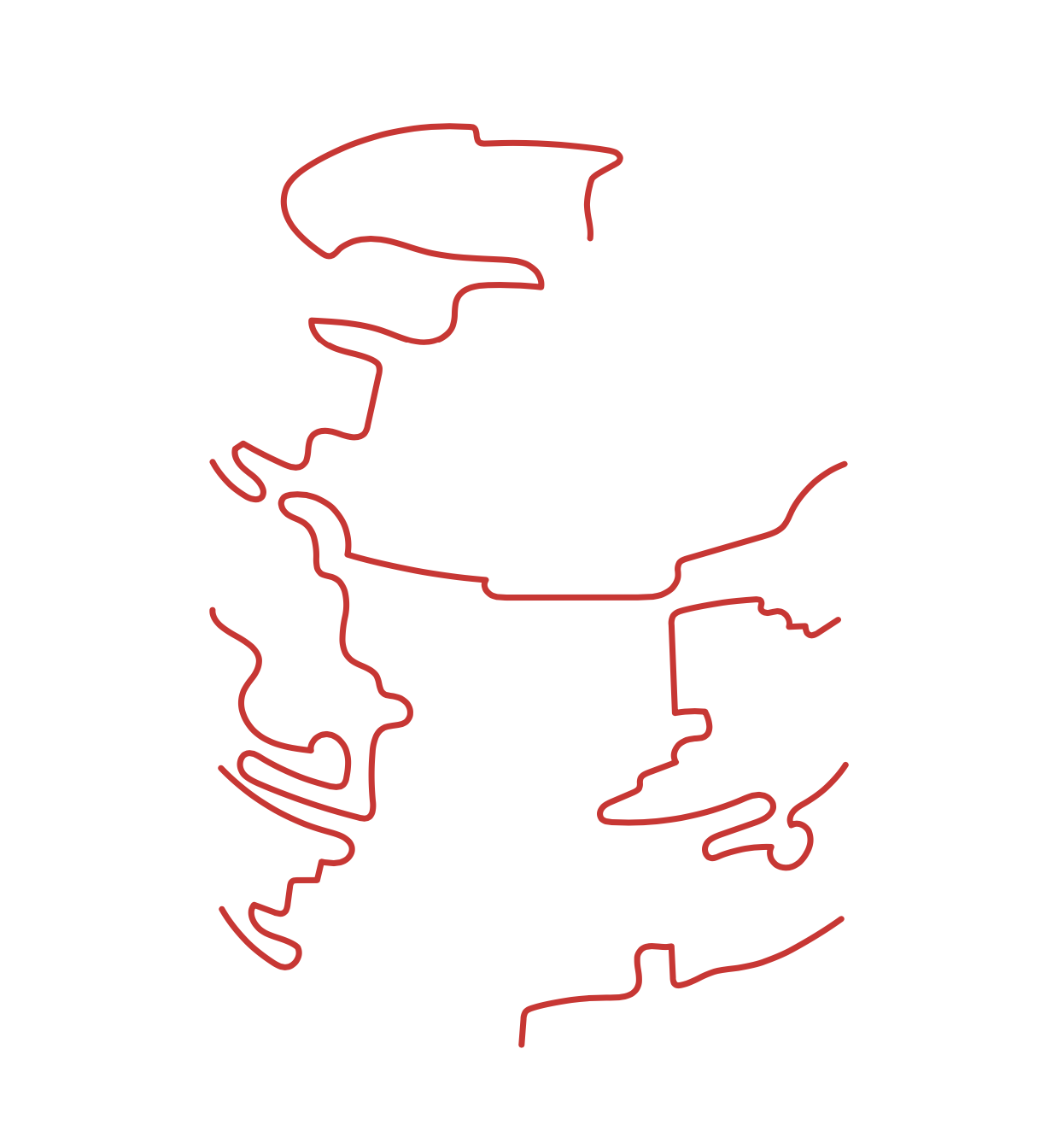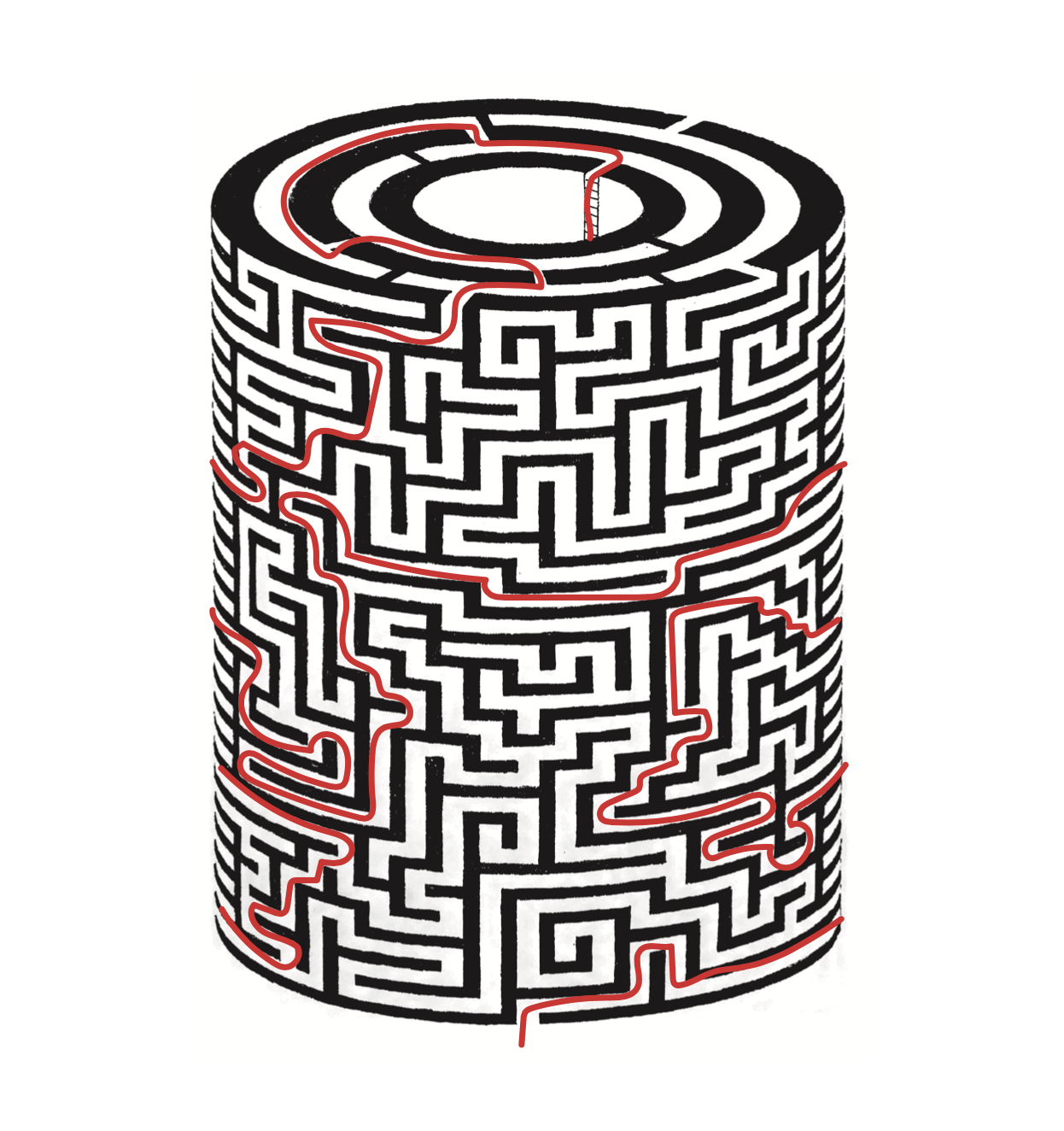Longing on the Langstrasse.
A chat with Fabian Stacoff aka Max Bunt.
Visiting Zurich last October for what has been missed in the better part of a quarter of a century meant that the city's absence in my mind has been replaced by other modern day memories and experiences.
The person who I have been in contact with for months now due to the design of the artwork for the album by Don Kashew was Fabian Stacoff, a man who's recognition in the Swiss scene can be traced back to his graphic design work for Zurich clubs such as the Kauz or Zukunft. Additionally, recognition is deserved perhaps even more so for his dedicated crate digging activities and showcasing them by making carefully Swiss themed curated mixtapes for the like of Proxima Records, Kasheme Soundsystem and Mattoni Pazzi. When not pursuing such disciplines, Fabian can either be seen with his kids in all kinds of local art exhibitions, finding collectibles in flea markets or playing records under the name Max Bunt at der Kern Bar, where he holds a monthly residency.
Whilst walking down the Langstrasse, comprising of bright lit red lights, short alleyways filled with people sipping on long drinks, sex workers and cheeseburger stands, we make our way to der Kern Bar for an evening of playing Swiss obscure records. Records that I have only seen fetching exorbitant prices on Discogs and often not even listened due to their rarity, casually resting in his tote bag. The events that transpired upon my arrival set the tempo of what I was to discover in the coming days of my week long stay in Zurich.
In this chat titled “Longing on the Langstrasse”, we talk about the design of the artwork for Don Kashew’s release on Dee Dee’s Picks, graphic design for movie props & everyday objects, abstract inspiration from younger minds and retaining value from making works to stand the test of time .
When did you become a graphic designer?
I’ve ben a graphic designer for over twenty years now. I suppose that my background comes from the fact that I was involved in various aspects of skateboarding culture throughout in the 80/90s. I think I gravitated towards that life style and itsaesthetic because the appeal was in the fonts and colours used, very loud and vibrant and quite graphic. Since i was really into those subcultures, I got into various facets of it.
Graffiti… designing stickers and logos… where eventually I landed a design job in a now defunct skateboard store when I was about seventeen. Skateboarding, like I guess in many other places in the world at the time, really blew up in the nineties and was everywhere. Its spirit really drove some good individuals to come together and share ideas of living and working and being together and just have fun and a good time and was a gateway for my current artistic endeavours. it's a perfect melting pot.
This is a bit of a two part question. How would you describe your own work? And how do you approach your work when it comes to design
I like to adapt my work to the target of the client. So I really love getting into a solution that works for myself and them. Since I don't just make art, I am in a position where it has to be a direction that is useful for my customers. In the sense that it cannot be only visually pleasing, but quite significant, informative and functional. I actually love this process of just getting to the point, yet it always retains to be different. Any job leads to new circumstances and I love this challenge.
When it comes to my creative process; basically, I make sketches by hand and then enhance it further through Adobe Illustrator. You can probably tell that I am very into vectorbase designs often with clean local type fonts. Most times, I create a lowercase on my own for a logotype
My inspiration comes from everywhere. Whether it being skateboarding, crate digging… I mean I really feel that inspiration comes from the projects that come to me. Since I am a person with quite humoristic values, I feel that the seriousness coming out of the projects and clients make results that appease both of us, and thus presents itself as common ground for the viewer to identify within this logo. I really love this symbiotic thing where you know, and not guess what the company is about by just looking into their logo. Or having a drawing shaped as typography, such as what I did for “Pulpo”. Although swiss design and its abstract, radical methodism has a place in my heart, I dont have the courage to pursue it because it is not my style. I think it is much better suited to say that my background in skateboarding, especially when referring to logos, tells a kind of the story of what the company is doing. It's like my work is more about specialisation, as opposed to generalisation. Actually, my first artists that I looked up to where American (Stanley George Miller, Raymond Loewy, Pushead etc.). Later I discovered the Lettera Books of the swiss graphic designer Haettenschwiler in a thrift store. That was an important influence in my work.
Compared to back in the 90s as opposed to today, where accessibility is eased to learn about graphic design, do you think that all these online resources have influenced the way that people do graphic design in today's world as opposed to back then?
When looking from this perspective, global works, as perhaps a gross generalisation, tend to look alike. Perhaps not literally, but more in the sense that people draw inspiration from the same sources or trends due to the accessibility of the internet. It has its charm and place because it has this new groove and this modernity in it. In my earlier days of graphic design (and still today) my references and inspirational ressources were to look at old books mostly from the early 60s till the late 80s.
Whether I try to include new trends into my work or rather focus on bettering my own technique, I think it comes equally in both. On one hand, I don't use social media because in a nutshell, I think it is a waste of time. Too much going on at once, whether keeping up with said trends, friends, your own profile.. It’s all too much. On the other hand, sometimes I'm teaching at the art school in Lucerne. I take what I need in terms of inspiration from the younger generation that I teach since they are involved in all those new mediatic aspects that I do not care for. It’s all super fresh and inspiring. And in the other way, I Also like this fundamental tradition. I’d like to clarify however, that I am not just waiting here and expecting inspiration or whatever to come to me, but more so as guidelines and areas of investigation that might interest me. Through this, I then do my own research.
And what about other reoccurring main inspirations?
In music that I listen to, record covers, talking with people, having a walk, travelling… basically when I take my time to breath and stay in the moment.
I like to take my kids to the museum and then see what they draw afterwards or what do they see, feel or get in their mind from what they’ve experienced while we’re talking about. especially when we go to things like abstract and constructive art expositions. It really inspires me to see what is on their mind and their naive interpretation of this complex art.
Do you have some favourite works of yours throughout the years?
Mainly old works because they stand the test of time and that is where their value grow for me. Time will tell….
Talking about Don Kashew’s release.. How did artwork come to? I discussed it a bit with Don already but what’s your side of the story?
Well sometimes my graphic design mandates included doing work for music labels. I’ve done it on different scales for labels or bands of the artists. Some smaller, some bigger than others. I don't necessarily always like the band or label in question, at least on a musical level. As long as there is respect and communication it all works out fine for me. It's not always the case that I can fulfil my graphical visions within these projects but I love working within the music industry.
Working with you for Don Kashew’s release has been extremely fulfilling as it captures the best of both worlds. It encompasses friendship, music and a cool conceptual label, so this project turned out great. Since I already admire his work and know him on a personal level, designing the artwork for his record was not necessarily easy, but progressive and delightful and ideas came out quite organically. Like I said, I spend a lot of my time in flea markets. Not only to collect records but also books, clothes, trinkets… so i had amassed quite a collection of retro artwork from books that i found throughout the years. After we decided on three covers that we found middle ground too, we based the artwork off of that. It was important to capture Don’s childlike wonder and enthusiasm within the artwork because it is such a big part of his personality. After further discussing how the genesis of this record came out, we agreed that the symbolism of a maze seemed adequate as a presentation of life struggles that we may come across at irregular intervals. Since Don is into puzzles as a pastime, the concretion of the maze was evident and we opted for a dual design cassette sleeve where you can turn them inside out for a different artwork. 2 for 1 kind of concept. And the fact that you can interact with the artwork is something i had never done before, so it’s really nice that in this day and age you can still push further the concept of artwork in that sense. All whilst trying to push graphic boundaries a bit further, we wanted to preserve authenticity. What I mean is that the SUISA logo that you see on the cassette is not something that is done much anymore, since about 1979. Therefore we decided to include it as a little nod to the past and because it obviously matches your concept.
I saw that your name was credited a few times on IMDB. What is your affiliation regarding working in film
It was 20 years ago and one time I rented my working space for a movie. It happens that they were looking for a guy that would make graphics for the movie. So this is basically how I got into the film industry.
I work on about two to three films per year. My work entails creating non branded items that relate to the environment in which the film is set in. For instance, due to brand copyright, you’d have to redesign everyday household items so they convert to their environment without infringement. Brands become such a commodity in our everyday surroundings which we sometimes do or do not identify with. Or use. Things like designing the brand of an invented restaurant, you’d have to imagine it in reference to the scene you are designing for. What kind of restaurant would fit such characters, and why? Is there foreshadowing to the plot? Do I need to apply for it? It’s also to create a sense of identity not only for the object, but also to sublimely further character development. For some people, the brand can define you. Or not. It all really depends but it’s super nice to contribute and enhance these worlds in depth with objects that could be deemed as insignificant, yet that surround us daily. That, and the fact that it is contextual. A movie set in the forties will not have the same type of design than we would today, so it gives me the opportunity to also be a researcher in that sense. I deem that I achieved my job correctly when the viewer does not notice that these brands are fictional.
Why is it important for you to dig in local flea markets and your fascination with swiss obscurities?
I still mainly buy all of my records from flea markets or thrift stores because of their accessibility in price and randomness.. Back then you could afford buying random records simply based on their artwork, they were all so cheap. Nowadays, with Discogs and stuff, it’s much harder to find stuff let alone buy them at an affordable price. Of course when you find a hidden gem, it’s all very exciting. You know, it's like your little secret for a while and then become very excited after to show my friends like you have no idea what I just got four or five francs.. Music should circulate, not stagnate in someone”’s basement.
On a side anecdote, the era in which my record collection cuts off is in the late eighties. I don’t like buying new stuff (although to be clear, i do listen to it) because it's just too much music to stay up to date with, so i’d rather have a focus and repair points at times in order to not lose myself. Besides, it’s all too recent to be considered collectables or vintage at this point, so we will see if my mind changes in say another twenty years.I have a fascination for 1970s and 80s era music because it was very precursor in the usage of modern day electronic instruments. As technology grew in the electronic field, so did sounds, and thus birthed some of the first records that could be labelled as electronic music. It's crazy for me like this thing started with electronic music synthesisers, drum machines, new ideas, new worlds, new. All these possibilities. Everything was open. I think also what fascinates me about that period is that it was the roots of everything else that we widely accept as modern electronic music. You know, whether it's hip hop, techno, new age… it was really the blueprints for all those genres that further spread into different directions and birthed other sub categories of music. in different directions. exactly. And,bnI always discover or get amazed by our new productions. I mean, we have a lot of newer Swiss labels that produce music in this genre and it's fantastic how many people there, they spend a lot of time and effort to create their visions of contemporary music and super cool. Super cool.
Do you prefer playing in a club or in a more private setting?
Around ten years ago I was playing in nightclubs a lot more. Now i play more often (and rather) in alternative bars, pop up restaurants, galleries or artsy events. I mean, now that years have passed, I find that the younger generations play better than me, and since i’ve never been a sort of crowd pleaser DJ, I’d rather such DJs take over and do it better than me. I’d rather communicate a listening sessions with some historical context than play out bangers one after another. Not to say there is a problem with the latter, but as a DJ myself, it does not fulfil me. The somewhat lack of connection to the crowd is an issue for me and would rather be on a communicative level with my audience. That said, I’d rather not be labelled as a DJ due to the modern connotations that come with it. Since i have no real interest and the technical side of DJing, I see myself more a selector or someone wants to to share some music that most people never heard of. To play for open-minded people who are inquisitive in discovering new sounds. It can be very hit or miss, but in a recent case where I actually had played in a club, people were very receptive to the obscure classic disco and italo-disco that I was playing that evening. It went very well and it was a good feeling to see people dancing to my selected music that was quite leftfield and yet worked.
Since I'm really not used to playing in clubs anymore, I love to have this comfort zone to play whatever I want. No pressure, no name, no expectations, no compromise. I mostly play for myself and to share this moment with friends, which is why it is a recurring thing that Don Kashew and I enjoy playing b2b so much, where we can enthuse and discuss what we are playing.
On a final question, why the name Max Bunt?
Max Bunt; as a wordplay means I like it colourful. Maximum colour. It can be neon and metallic sounds of the 80s or souvenirs from all over the world. So I sticked with this name.
Stay up to date and get in touch with Fabian Stacoff’s website//Max Bunt’s mixes.

